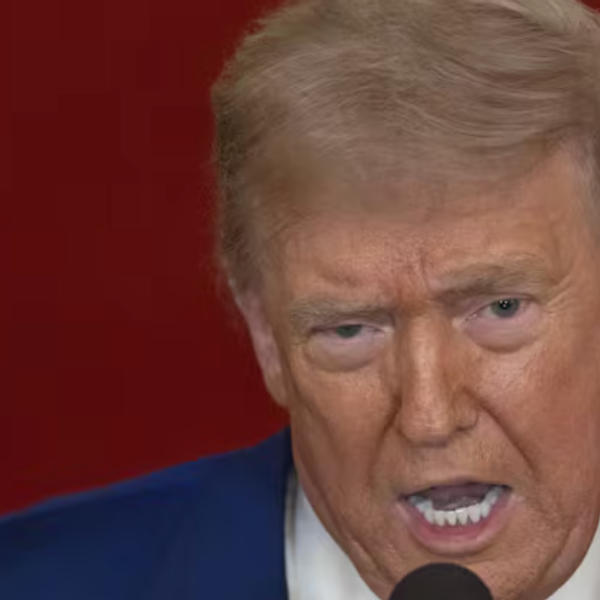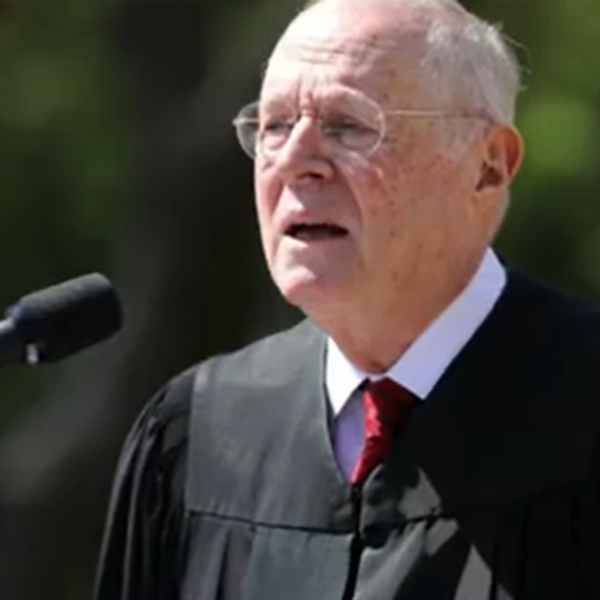The Dark History Behind Donald Trump’s Hair
Presidential hair has long been a subject of intense public fascination. John F. Kennedy’s stylish part was an essential component of his youthful energy and led to the decline of hat-wearing in the 1960s. Abraham Lincoln grew a beard at the suggestion of eleven-year-old Grace Bedell, who said it would make him more handsome and electable. Some of the earliest Americans collected locks of George Washington’s hair, which became coveted relics after his death.
And Donald Trump is obsessed with his hair. Undoubtedly one of the engineering feats of our time, Trump’s golden coiffure swirls in improbable arches and with an ever-changing consistency — something that Rumplestiltskin wove during a particularly nasty hangover. His massive part is no less miraculous than that of Moses in the Red Sea, though who can say whether Trump’s version will lead anyone to the Promised Land?
The question of whether Trump’s follicles are real and natural is insignificant on its own, but the performance behind the hair is essential to understanding the Trump phenomenon. The legendary combover has become synonymous with the man himself, a symbol of his larger-than-life ego and vanity. It’s nearly impossible to turn on a news show or late night program without at least one crack about the presumptive GOP nominee’s scalp.
Why the obsession?
A Mane for All Seasons
Trump’s odd combover is unique in that he doesn’t try to hide it. At times, it even seems that Trump, like a veteran gladiator, savors challenges to his hair. Its authenticity clearly means a lot to him.
It’s also been a major talking point on the campaign trail. After trying on a coal miner’s hardhat at a West Virginia rally in May, Trump lectured the crowd about hairspray. He went off on a curious tangent about the unfair ban on aerosol spray products in the 1970s, which he then clumsily connected to environmental restrictions placed on the state’s mining industry. Rumors abound that Trump, when he first heard that the federal government would be cracking down on chlorofluorocarbon-emitting aerosols, hoarded a near lifetime supply.
On numerous occasions, Trump has invited doubters to feel his hair. Larry King famously touched it during a 2004 live interview and affirmed that it did not seem to be a wig or a combover. Even Megyn Kelly, fresh off her feud with Trump, recently admitted that she too could attest to the legitimacy of Trump’s tresses, having “shoved her hands up in [it]” herself. But take their assurances with a grain of salt: the hair-proving ritual is a highly-choreographed one, in which Trump covers most of his head with his hand, offering just the front of his hairline for inspection.
This habit is especially strange in light of Trump’s self-described mysophobia. He loathes shaking hands and pushing elevator buttons, and yet he gives strangers permission to tug right above his sweaty forehead.
To Pay, Or Not Toupee
Despite Donald’s constant attempts show off his natural hair, not everyone’s buying it. If you’ve ever seen the ghostly way Trump’s mop blows in the wind, you’d understand that skepticism. Critics hold different theories about what kind of trickery is going on behind-the-scenes.
Gersh Kuntzman, journalist and author of Hair! Mankind’s Historic Quest to End Baldness, posits that Trump’s style is most likely the joint result of a combover and hair transplant, which would explain Trump’s eagerness for people to grab a handful of his mane. It would be, after all, real hair.
Ashley Feinberg of the website soon-to-be-formerly-known-as-Gawker says that Trump may be the recipient of a weave of epic proportions. Feinberg connected the businessman to Dr. Edward Ivari, a little-known physician who has pioneered a nonsurgical means of hair restoration using strands of synthetic microcylinders. This technology, which attaches fresh hair strands to thinning ones, requires frequent tightening and costs roughly $60,000 dollars a year to maintain. That’s nearly double the Trump University premium package.
The Bald Truth
To a large extent, Trump’s insecurity is understandable. Balding is common among adult males, and there exists a definite stigma against the correction of that flaw. In secret, manly man Sean Connery donned a hairpiece in every James Bond film, and Ronald Reagan dyed his gray hair in the Oval Office.
Trump, on the other hand, has more than his career riding on his hair — he has his sanity.
Harry Hurt III’s 1993 book Lost Tycoon: The Many Lives of Donald J. Trump reveals just how desperate Trump is to keep up appearances. He underwent scalp reduction surgery in 1989, probably to correct a bald patch, but the surgeon botched the procedure. The infuriated mogul stormed home to confront then-wife Ivana Trump, who had recommended the plastic surgeon to her husband.
Barging into her bedroom, Trump screamed, “Your fucking doctor has ruined me!” He then tore fistfuls of hair from her head, ripped off her clothes, and forced himself on her. Ivana described the incident as “rape,” in their divorce deposition. She softened her account in later years, first claiming that her Trump had not violated her in any criminal sense, and then subsequently stating that the story was “totally without merit.” Trump, unsurprisingly, denied that any of it ever happened.
We can’t expect Trump to ever get his comeuppance for the assault, but his actions speak volumes about his character. He is a dangerous man when his pride is threatened, and his hair is the symbolic centerpiece of his fragile persona.
When he steps up to the podium, Trump knows: He is the smartest businessman, he has the most loyal supporters, and his country is the greatest in the world. His brand of exceptionalism relies on an oversized display of masculinity. No matter the occasion, he must be seen with a beautiful woman in tow; he has to show off the size of his massive hands. He needs his physicality to prove that he is an “alpha” male: the most fit to fight, to lead, and to breed.
Of course, American voters would have no problem electing a balding president. We’ve done it before. But Trump has a major problem confronting his balding reflection, one older and weaker than he’d care to admit. The assertion that his hair is real, true or not, allows Trump to bypass that vulnerability and create a version of himself more capable of fulfilling all the promises he’s been making to America. With a full head of hair, Donald can make himself great again.
Photo: Republican U.S. presidential candidate Donald Trump poses for a photo after an interview with Reuters in his office in Trump Tower, in the Manhattan borough of New York City, U.S., May 17, 2016. REUTERS/Lucas Jackson












